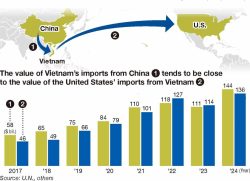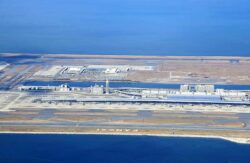Legal Wrangling Over U.S. Marine Corps Futenma Air Station Relocation in Okinawa Nears End for Japan
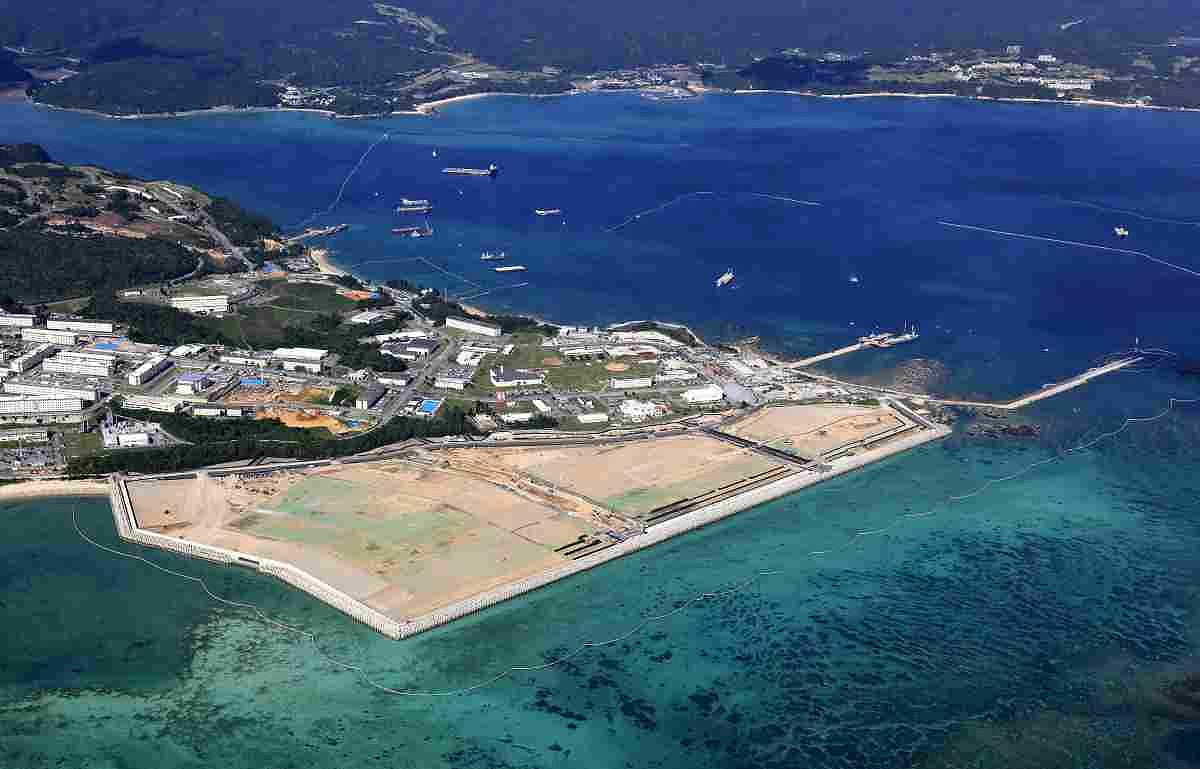
A coastal area of the Henoko district in Nago, Okinawa Prefecture, undergoing land reclamation is seen in October 2022.
17:51 JST, September 5, 2023
Okinawa Prefecture’s legal battle against the central government over a U.S. military base relocation issue appears to be at a de facto end.
The Supreme Court on Monday upheld a lower court’s ruling against the prefecture regarding a central government land reclamation project. The project is necessary for the relocation of the U.S. Marine Corps Futenma Air Station in Ginowan to the Henoko district in Nago.
Okinawa had appealed to the top court after a high court ruled the central government could order the prefecture to approve its proposed design changes to reinforce weak areas in the seabed in the reclamation work.
Since 2015, the prefectural and central governments have been butting heads in the courts, but based on the Supreme Court’s ruling, Chief Cabinet Secretary Hirokazu Matsuno said the central government is determined to go ahead with the project.
“Steadily proceeding with the reclamation project itself will lead to a realization of the complete return of the Futenma Air Station to Japan and the removal of the dangers involving the U.S. air base to the local area,” Matsuno said during a press conference later Monday.
All five justices on the first petty bench of the Supreme Court agreed on the ruling. The decision noted that the prefecture’s attitude of not approving design changes that are indispensable for the relocation plan violates laws and regulations, upholding the claims made by the central government.
The pouring of earth and sand into the coastal area of the Henoko district began in 2018. The land reclamation work on the south edge of the site has been completed, making up just under 30% of the entire area.
The reclamation work has suspended, however, due to the need to reinforce the weak seabed discovered on the north side.
Whether Okinawa Gov. Denny Tamaki will actually approve the central government’s design changes is now the focus.
Proxy plan
The central government has been holding several behind-the-scenes meetings with relevant ministries, including defense, justice and land. The entities are preparing for the event that Tamaki continues to refuse to approve the design changes.
In such a case, the Land, Infrastructure, Transport and Tourism Ministry would, for example, make official recommendations to the prefecture. Unless the prefecture accepted the recommendations, the central government would file a lawsuit seeking to have the land minister serve as a substitute in place of the governor to approve the changes.
Some within the central government thought it would be better to refrain from pursuing this course of action for the time being, instead wanting to find common ground by considering a dialogue between the two sides.
“Just because the Supreme Court handed down the ruling, it wouldn’t be good for the central government to unilaterally push ahead with its claims,” said a senior official at the Cabinet Secretariat.
As long as Okinawa continues to stonewall the relocation plan, however, opinion grew within the central government that any dialogue would only allow the prefecture to stall. So Matsuno, who is also the minister in charge of mitigating the impact of U.S. forces in Okinawa, finally tabled this idea.
The central government wants to begin shoring-up the banks and other work for the resumption of the reclamation project by March next year. A senior central government official thinks that the legal procedures to install a proxy will take several months. If, however, Tamaki accepts the top court ruling and approves the changes, it is possible the reclamation work will resume this year.
Base burden
The court battle between the central and prefectural governments was triggered in October 2015 by the cancellation of the approval of the reclamation work by then Gov. Takeshi Onaga.
The central government aims to complete the reclamation work in another 12 years or so. The work is facing difficulties as it will be necessary to drive about 70,000 piles to a depth of up to 70 meters below sea level to reinforce the weak seabed.
The timing of the return of the Futenma Air Station has been delayed significantly. Initially, the return was supposed to take place in the fiscal year ending March 2023. Now, it is expected in the mid-2030s. The related costs, which were estimated at more than ¥350 billion, have ballooned to about ¥930 billion.
With the possibility seemingly rising of China launching an invasion of Taiwan, Okinawa’s strategic importance in maintaining the U.S. military’s deterrence effect is growing. For the time being, it is inevitable that the Futenma Air Station, which is surrounded by an urban agglomeration and has been described as “the most dangerous base in the world,” continues to be in use.
The central government is faced with the task of accelerating the relocation plan and stepping up efforts to reduce U.S. base-related burdens on Okinawa.
"Politics" POPULAR ARTICLE
-

Japan, India Aim for More Than 500,000 People-to People Exchanges over Next 5 Years
-

Japan to Provide ¥810 Billion in Infrastructure Aid to African Nations, Seeks to Reduce China’s Influence in Continent
-

Chief of Japan’s SDF Logistics Unit in Djibouti Vows to Assist Japanese Nationals in Emergencies, Stresses Need to Prepare for Protecting Citizens
-

Japan-South Korea Agreement Reflects Shared Understanding
-
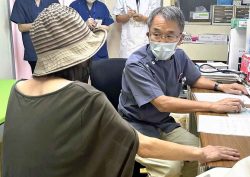
Remote Japan Island near Taiwan Struggles to Secure Doctor Amid Fear of Taiwan Contingency
JN ACCESS RANKING
-

Japan’s Seafood Exports Still Hurting in Wake of Fukushima Incident, but Hopes Rising for Chinese Market
-
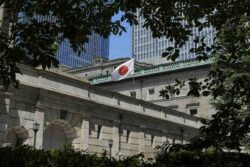
Japan’s Core Inflation Slows in July, Stays above BOJ Target
-

Japan in Prime Spot for Total Lunar Eclipse Early Monday Morning, 1st Visible from Country in Almost 3 Years
-

Japan, India Aim for More Than 500,000 People-to People Exchanges over Next 5 Years
-

S. Korea’s Lee Eager to Enhance Ties with Japan More














